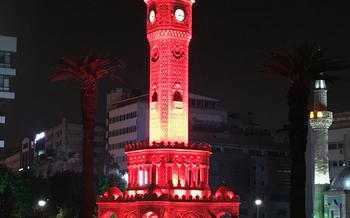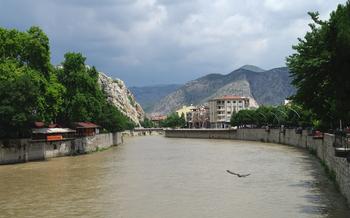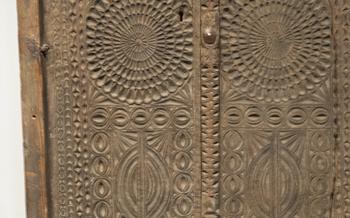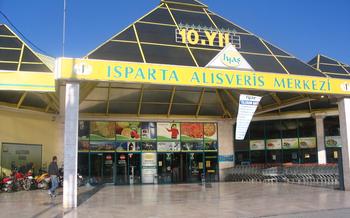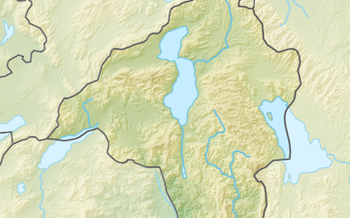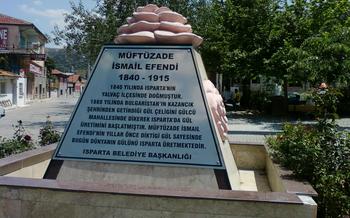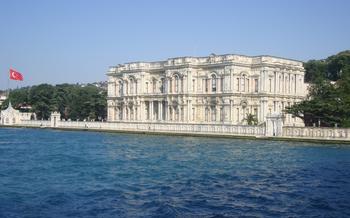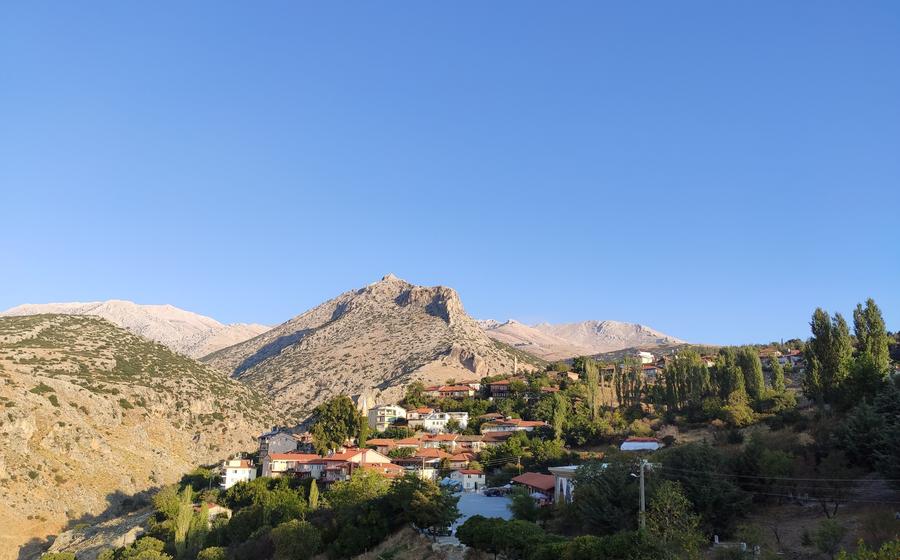
Gülevler Garden
- Historical Background
- Location and Accessibility
- Admission and Hours of Operation
- Gardens and Landscapes
- Water Features and Fountains
- Sculptures and Statues
- Flora and Fauna
- Cultural and Historical Significance
- Educational Programs and Workshops
- Photography Opportunities
- Local Cuisine and Dining
Historical Background
The Gülevler Garden, a serene oasis nestled in the heart of Isparta, Turkey, holds a rich history that dates back to the late 19th century. Its creation is attributed to a wealthy local merchant named Hacı Mehmet Güle. Inspired by his travels and a desire to create a beautiful haven for his family, he commissioned the construction of this magnificent garden.
Hacı Mehmet Güle envisioned a garden that would showcase both Turkish and European influences, reflecting his cosmopolitan outlook. He collaborated with skilled architects, gardeners, and artisans to bring his vision to life. Over several years, the garden took shape, becoming a testament to his passion for horticulture and aesthetics.
The Gülevler Garden is a prime example of Ottoman-era architecture and design. Its layout features symmetrical pathways, ornate fountains, and graceful pavilions. The integration of water elements, such as ponds and canals, adds a tranquil ambiance to the garden, creating a harmonious blend of natural beauty and architectural elegance.
Beyond its aesthetic significance, the Gülevler Garden holds cultural and historical importance. It has played a vital role in the social and cultural life of Isparta throughout the years. The garden has hosted numerous cultural events, festivals, and exhibitions, fostering a sense of community and cultural exchange. Its enduring legacy as a beloved public space has earned it recognition as a national heritage site and a symbol of Isparta's rich cultural heritage.
Location and Accessibility
The Gülevler Garden is conveniently located within the city of Isparta, making it easily accessible for visitors. Situated in the heart of the city, it offers a tranquil oasis amidst the urban landscape. To reach the garden, visitors can utilize various means of transportation.
Public transportation is a viable option, as buses and trams frequently pass by the garden's vicinity. Several bus stops are located within a short walking distance, providing easy access for those without private vehicles.
For those who prefer the convenience of driving, ample parking facilities are available near the garden. Designated parking areas cater to the needs of visitors, ensuring a hassle-free experience.
The garden's proximity to major landmarks and tourist attractions is another advantage. Within a short distance, visitors can explore the Isparta Museum, which houses a rich collection of historical artifacts. The Ulu Mosque, with its stunning architecture, is also situated nearby, showcasing the city's religious heritage.
Additionally, the garden is wheelchair accessible, ensuring that visitors with disabilities can fully enjoy its beauty and tranquility. Ramps and designated pathways facilitate easy navigation throughout the garden, allowing everyone to experience its charm.
Admission and Hours of Operation
Budget-Friendly Experience: Visiting the Gülevler Garden is a relatively inexpensive activity, making it accessible to travelers of all budgets. While admission is typically free of charge, there may be nominal fees for special events or guided tours.
Flexible Hours: The garden's operating hours are designed to accommodate visitors' schedules. It typically opens early in the morning and remains open until late evening, providing ample time for exploration and relaxation.
Guided Tours: To delve deeper into the garden's history and significance, consider booking a guided tour. These tours are led by knowledgeable guides who can provide insights into the garden's design, plant species, and cultural importance.
Best Time to Visit: The garden is a year-round destination, offering unique experiences in each season. Spring and summer are ideal for admiring the vibrant blooms and lush greenery, while autumn presents a colorful display of foliage. Winter transforms the garden into a serene and tranquil retreat, with snow-capped landscapes.
Gardens and Landscapes
The Gülevler Garden is a visual masterpiece, showcasing a harmonious blend of nature's beauty and human ingenuity. Its layout, designed with meticulous precision, is a testament to the skill and vision of its creators. Visitors are greeted by a central axis, leading them on a journey through the garden's diverse landscapes. Along this path, they encounter an array of plant species, each contributing to the garden's rich tapestry of colors, textures, and fragrances.
Notable trees stand as majestic guardians, their branches reaching towards the sky, while vibrant shrubs and flower beds create a kaleidoscope of colors. Roses, the garden's signature bloom, are a sight to behold, their delicate petals unfurling in a symphony of hues. Seasonal changes transform the garden's appearance, with spring bringing forth a burst of color as flowers bloom in abundance. Summer casts a golden glow over the landscape, while autumn paints the leaves in vibrant shades of red, orange, and yellow. Winter, though quieter, offers a serene beauty, with snow-capped branches and sparkling frost adding a touch of magic to the scene.
Water Features and Fountains
The refreshing melodies of cascading water add to the serene atmosphere of the Gülevler Garden. Stroll along the garden's pathways and encounter an array of fountains, ponds, and water channels, each with its unique charm. Admire the intricate designs and architectural styles of these water features, from traditional Ottoman to contemporary forms. Let the gentle sound of water lull you into tranquility as you explore the garden's hidden nooks and crannies.
In the heart of the garden lies a magnificent fountain, its tiers adorned with intricate carvings and colorful tiles. Water cascades gracefully from the fountain's summit, creating a mesmerizing spectacle. The gentle mist that emanates from the fountain provides a refreshing respite on warm summer days.
Water plays a significant role in the garden's historical and cultural context. During the Ottoman era, gardens were often designed with an emphasis on water features, which were believed to bring life and prosperity. The presence of water in the Gülevler Garden symbolizes abundance, fertility, and the harmonious coexistence of nature and humanity.
Sculptures and Statues
The Gülevler Garden is adorned with a collection of sculptures and statues that add to its artistic and cultural allure. These works of art are scattered throughout the garden, providing visitors with unexpected and delightful encounters. Some of the notable sculptures include busts of famous poets and philosophers, as well as statues depicting mythological figures and historical events. The intricate details and lifelike expressions of these sculptures captivate visitors, offering a glimpse into the artistic heritage and craftsmanship of the region.
One particularly striking sculpture is a bronze statue of a young woman, gracefully poised with a flowing gown that seems to dance in the breeze. This statue, titled "The Dancer," captures the essence of movement and elegance, symbolizing the vitality and beauty of the garden. Visitors often pause to admire the statue, appreciating the artist's skill in capturing the delicate balance and grace of the human form.
Another notable sculpture in the garden is a marble bust of a bearded man, believed to be a prominent figure from Isparta's history. The bust exudes an air of wisdom and authority, inviting visitors to ponder the contributions and legacy of this influential individual.
These sculptures and statues not only enhance the visual appeal of the Gülevler Garden but also serve as a testament to the region's rich artistic and cultural traditions. They provide visitors with an opportunity to appreciate the creativity and craftsmanship of local artists, while also offering a glimpse into the historical and mythological narratives that have shaped the identity of Isparta.
Flora and Fauna
Gülevler Garden is a haven for nature enthusiasts, with a rich diversity of plant life. Native and exotic species coexist harmoniously, creating a vibrant and colorful tapestry. Among the garden's highlights are the magnificent roses, which bloom in profusion during the annual Rose Festival. This fragrant extravaganza attracts visitors from far and wide, who come to admire the stunning displays and participate in the festivities.
The garden is also home to a variety of trees, shrubs, and flower beds, each contributing to its unique charm. Visitors can stroll along the winding paths, discovering hidden corners and admiring the carefully manicured landscapes. The changing seasons bring new delights, from the delicate blossoms of spring to the vibrant hues of autumn.
Birdwatching enthusiasts will find the garden to be a paradise, with a diverse array of bird species flitting among the trees and shrubs. The tranquil atmosphere and abundance of vegetation provide an ideal habitat for these feathered creatures, making it a popular spot for birdwatching and photography.
The garden's ecosystem is carefully protected and conserved, ensuring its long-term sustainability. Visitors are encouraged to respect the natural environment and minimize their impact, so that future generations can continue to enjoy this beautiful and biodiverse space.
Cultural and Historical Significance
The Gülevler Garden is deeply rooted in the history and cultural fabric of Isparta. It bears witness to the city's rich past and its enduring connection to the Ottoman Empire. During the Ottoman era, Isparta served as an important center of rose cultivation and production, earning it the title of "City of Roses." The garden, with its abundance of roses, pays homage to this heritage.
Throughout the years, the garden has played host to numerous cultural events, festivals, and exhibitions. These events celebrate Isparta's cultural traditions, showcase local art and crafts, and provide a platform for cultural exchange and dialogue. The garden's serene ambiance and picturesque surroundings make it an ideal venue for such gatherings.
In recognition of its cultural and historical significance, the Gülevler Garden has been designated as a national heritage site and cultural monument. This designation underscores the garden's importance as a symbol of Isparta's identity and its contribution to Turkey's cultural heritage.
Educational Programs and Workshops
The Gülevler Garden is not just a place of beauty and tranquility; it also serves as an educational hub. The garden offers a variety of educational programs and workshops that cater to all ages and interests. These programs are designed to promote environmental awareness, horticulture, history, and art.
One of the most popular programs is the "Garden Explorer Program," which is aimed at children aged 6 to This interactive program introduces children to the diverse plant life found in the garden, as well as the importance of conservation. Children participate in hands-on activities such as planting seeds, learning about photosynthesis, and creating their own miniature gardens.
For adults, the garden offers a variety of workshops on topics such as gardening techniques, floral arrangement, and landscape design. These workshops are led by experienced horticulturists and provide participants with an opportunity to learn new skills and gain a deeper understanding of gardening.
The Gülevler Garden also hosts regular art exhibitions and workshops. These events showcase the work of local artists and provide a platform for cultural exchange. Visitors can admire paintings, sculptures, and other artworks that are inspired by the beauty of the garden.
By offering a variety of educational programs and workshops, the Gülevler Garden not only provides a place of respite and relaxation but also contributes to the cultural and intellectual enrichment of the community. Whether you are a nature enthusiast, a gardening aficionado, or simply someone who appreciates art, the garden has something to offer everyone.
Photography Opportunities
The Gülevler Garden is a photographer's paradise, with an abundance of photo-worthy spots and stunning views. Every corner of the garden offers a unique perspective, from the vibrant flower beds and cascading fountains to the elegant pavilions and sculptures. With so much beauty to capture, it's easy to spend hours exploring the garden through the lens of a camera.
One of the best things about photographing the Gülevler Garden is the variety of angles and perspectives available. The garden's many paths and walkways allow visitors to get up close and personal with the flowers, while the elevated terraces and balconies offer panoramic views of the entire property. This diversity of vantage points ensures that every photographer can find the perfect shot.
To capture the garden's beauty at its peak, try to visit during the early morning or late afternoon, when the light is soft and golden. This is especially important for photographing the flowers, as the colors will be more vibrant and saturated in the warm light. If you're lucky, you might even catch a few drops of dew glistening on the petals, adding an extra touch of magic to your photos.
When photographing the Gülevler Garden, don't forget to experiment with different settings and techniques. Try using a wide-angle lens to capture the garden's expansive vistas, or a macro lens to focus on the intricate details of the flowers. And don't be afraid to play around with different shutter speeds and apertures to create different effects.
For those who love to share their photos on social media, the Gülevler Garden is an Instagrammable dream. With its colorful flowers, picturesque fountains, and elegant architecture, there's no shortage of stunning backdrops for your photos. Be sure to use the hashtag #GülevlerGarden when sharing your photos, so that others can discover this hidden gem.
Local Cuisine and Dining
Gülevler Garden offers a delightful culinary experience with its charming cafes, restaurants, and food stalls. Visitors can savor a variety of local and international cuisines while immersing themselves in the garden's tranquil atmosphere.
The garden's cafes offer a tempting array of pastries, sandwiches, and refreshing beverages. Enjoy a leisurely breakfast under the shade of a tree or indulge in a sweet treat while admiring the vibrant blooms.
For a more substantial meal, visitors can choose from several restaurants located within the garden. These restaurants offer a diverse menu featuring traditional Turkish dishes, international favorites, and vegetarian options. Savor the flavors of freshly grilled kebabs, aromatic stews, or a crisp, wood-fired pizza.
Outdoor seating is available at most dining establishments, allowing visitors to fully appreciate the garden's beauty while enjoying their meal. Imagine sipping on a cup of Turkish coffee while surrounded by the fragrance of roses and the gentle sound of water fountains.
When visiting the Gülevler Garden, be sure to sample the local specialty, the famous Isparta rose jam. This sweet and tangy delicacy is made from the aromatic roses grown in the garden. Visitors can purchase jars of rose jam as a souvenir or indulge in a rose-flavored dessert at one of the garden's cafes.
Whether you're looking for a quick snack or a leisurely dining experience, Gülevler Garden has something to satisfy every palate. So come hungry and enjoy a culinary adventure amidst the splendor of this enchanting garden.
